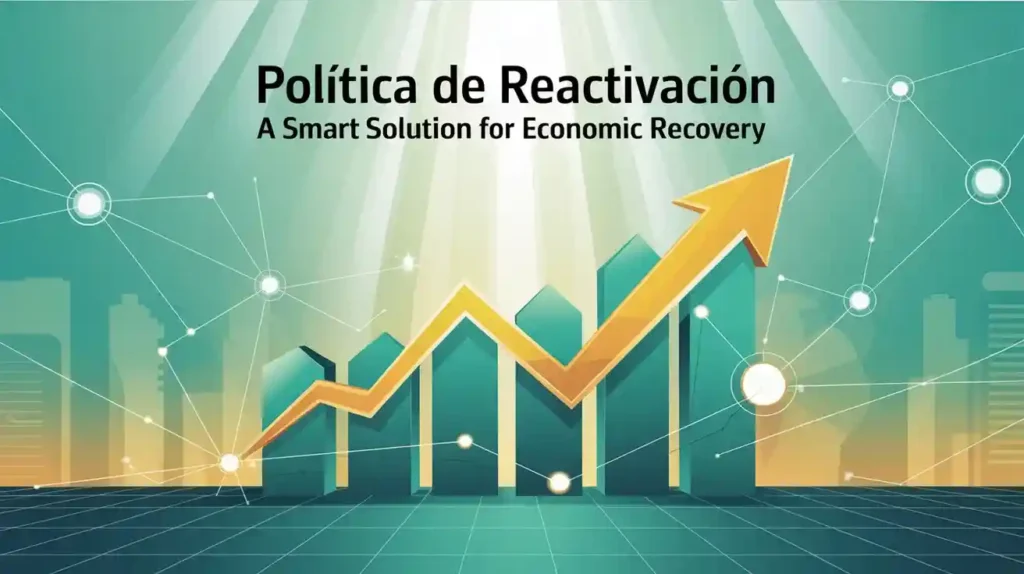When the economy slows down due to a crisis—like a pandemic natural disaster or financial crash—governments must take action. Businesses shut down jobs disappear and families struggle to make ends meet. To bring things back on track nations rely on a special plan the Política de Reactivación. This recovery strategy is a powerful tool to help people boost businesses and build a stronger future. This article breaks down what this policy means how it works and how countries around the world have used it to bounce back from hard times.
What Does It Mean
A Política de Reactivación is a government-led plan to help the economy recover after a major disruption. These policies include steps like investing in public projects supporting small businesses creating jobs and improving services like healthcare and education. Every country builds its policy differently depending on its needs. Some focus on building roads or schools to create jobs. Others may offer loans and tax breaks to help local businesses. The main idea is to move the economy from crisis to growth in a way that is fast fair and effective.
After the COVID-19 pandemic many nations across Latin America Europe and Asia adopted such plans to recover. From Colombia’s digital inclusion efforts to Spain’s green energy investments each version was shaped to suit local challenges and future goals.
Why Is It Important
An economic slowdown can affect millions of lives. People lose income schools and hospitals get less funding and businesses struggle to survive. A reactivation policy provides the tools to fight back. For example when small businesses get help through loans or tax relief they can stay open and keep paying workers. When people feel secure in their jobs they spend more which helps the economy grow even more. Countries that take quick and smart action usually recover faster than those that wait. Thats why having a good plan—and acting on it—is key to making a strong comeback.
Benefits and Risks
The Benefits
One major benefit is job creation. Governments often fund public works like construction of roads hospitals or energy plants. These projects hire workers and boost local economies. Another benefit is support for businesses. With financial help or fewer taxes companies can survive and even expand during tough times. Reactivation plans also help improve public confidence. When people believe the economy is getting better they’re more likely to invest spend and take risks that lead to growth. Spain is a good example. Its recovery program funded partly by the European Union focused on digital upgrades and green projects. These investments created thousands of jobs and helped modernize the economy country
The Challenges
Even a strong Política de Reactivación faces some challenges. The first is money. These programs cost billions and not every country has enough in the budget. Some may need loans from the World Bank or IMF which can increase debt. Another issue is speed. If programs are rolled out too slowly they may not help people in time. A good plan must be fast and flexible. Corruption is a risk too. Without proper checks some funds may not be used properly. Transparency is critical to ensure help reaches the people who need it most.
Lastly inflation can rise if too much money enters the economy at once. This can hurt low-income families the most.
How to Build a Strong Recovery Plan
Here is a step-by-step guide many countries follow when creating a national reactivation strategy
| Step | Action | Details |
| 1 | Assess the Damage | Study which sectors were hit hardest using surveys data and expert input. For example Mexico’s tourism industry fell by over 60% during COVID-19. |
| 2 | Set Clear Goals | Decide what needs to improve—like job numbers exports digital access or local business growth. Goals guide the policy design. |
| 3 | Involve the Community | Consult with business leaders economists labor groups and public agencies. Collaboration leads to better planning. |
| 4 | Secure and Allocate Funding | Use national budgets international loans or private partnerships. Chiles Chile se Recupera plan funded thousands of small businesses this way. |
| 5 | Monitor and Improve | Track whats working and whats not. Adjust the strategy as needed to get better results and avoid wasted resources. |
This process ensures the recovery plan is fair effective and built to last.
Global Examples That Worked
Many countries have used this model with success
- Chile invested heavily in infrastructure and job creation. It helped lower unemployment and support vulnerable communities.
- Colombia focused on digital skills rural development and income support for low-income families.
- Spain tied its recovery plan to green energy digital access and education reform—boosting innovation and sustainable growth.
Each country shaped its plan to meet local needs while aiming for long-term improvement not just a quick fix.
Frequently Asked Questions
What is the main goal of a reactivation policy
The main goal is to restore economic activity by supporting jobs businesses and public investment.
How do governments fund these plans
Most use national budgets international aid or public-private partnerships. Some borrow from institutions like the IMF or World Bank.
What makes a reactivation plan successful
Clear goals quick action transparency and constant monitoring are key. Public trust and cooperation also matter a lot.
Can these policies help the environment
Yes. Many countries now include green energy and climate projects in their recovery plans to ensure sustainability.
Are these plans only for big crises
They are usually used after major events but they can also support slow-growing economies or fund long-term improvements.
Conclusion
A Política de Reactivación is more than just a crisis response—its a blueprint for a better fairer economy. With careful planning smart funding and community support it helps countries recover faster and build resilience against future challenges. Whether its creating jobs supporting small businesses or investing in clean energy this policy offers a path to recovery that benefits everyone. The key is acting with purpose measuring progress and keeping people at the center of every decision.



